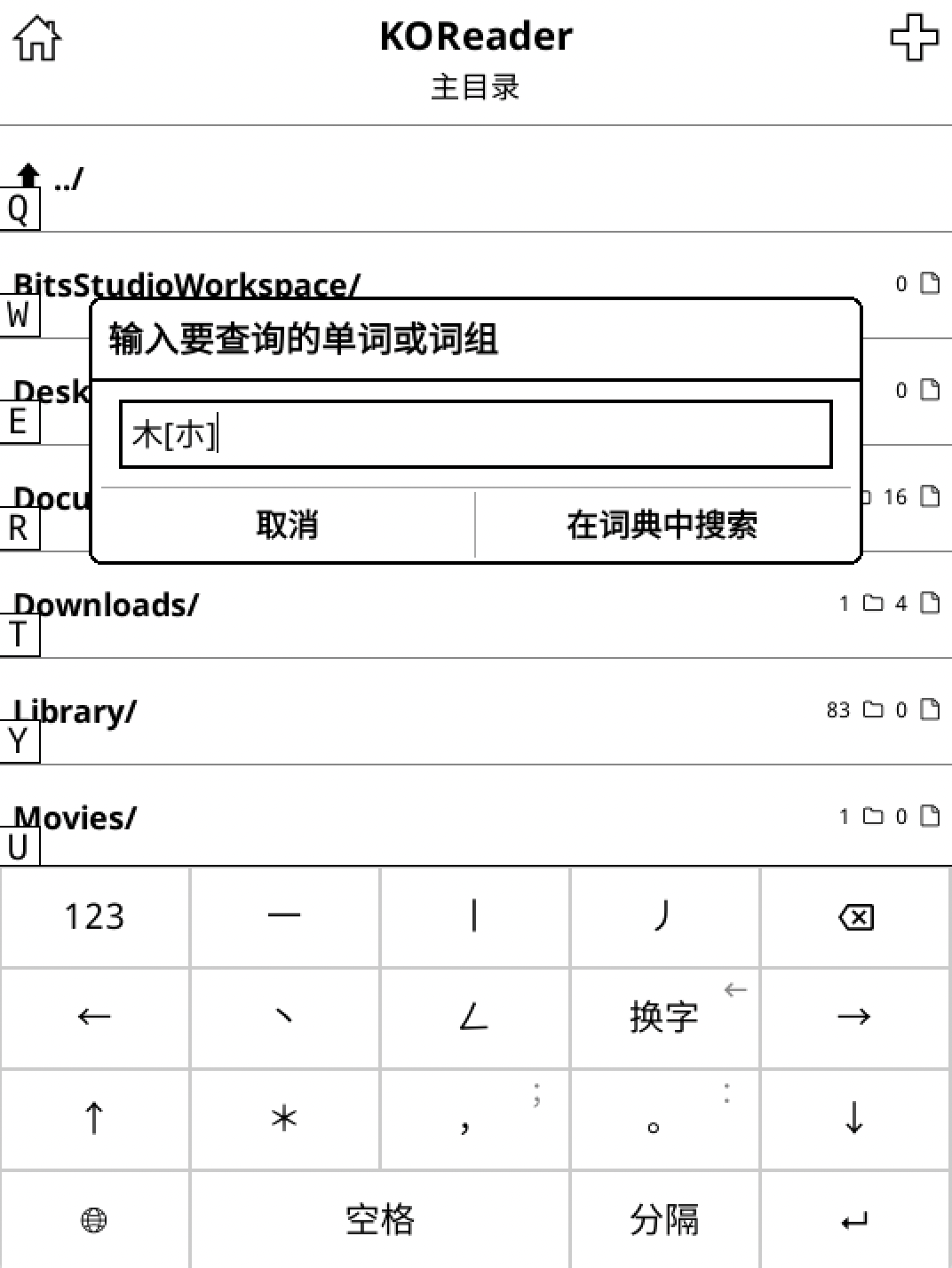As one of the maintainers of
KOReader, a versatile a document and image viewer, I’m proud to announce
the latest release.

We skipped last month’s release because I was right in the middle of moving, which serendipitously coincided with fairly drastic changes that needed more time for testing, such as a big rewrite of gestures and multitouch (#9463).
Users of the Dropbox plugin will now be able to use the new short-lived tokens (#9496).
 One of the more visible additions is the new Chinese keyboard contributed by @weijiuqiao, based on the stroke input method (#9572). It’s not smart and it requires knowledge of stroke order. A tutorial can be found here, part of which I will reproduce below.
One of the more visible additions is the new Chinese keyboard contributed by @weijiuqiao, based on the stroke input method (#9572). It’s not smart and it requires knowledge of stroke order. A tutorial can be found here, part of which I will reproduce below.
The stroke input method groups character strokes into five categories. Then any character is typed by its stroke order.
| Key |
Stroke type |
一 |
Horizontal or rising stroke |
丨 |
Vertical or vertical with hook |
丿 |
Falling left |
丶 |
Dot or falling right |
|
Turning |
For example, to input 大, keys 一丿丶 are used.
Note all turning strokes are input with a single 一.
After getting the intended character, a 分隔(Separate) or 空格(Space) key should be used to finish the input. Otherwise, strokes of the next character will be appended to that of the current one thus changing the character.
Besides, the keyboard layout contains a wildcard key * to use in place of any uncertain stroke.
Swipe north on the 分隔(Separate) key for quick deletion of unfinished strokes.
Logo credit: @bubapet
We’d like to thank all contributors for their efforts. Some highlights since the previous release include:
Full changelog — closed milestone issues
Installation instructions: Android • Cervantes • ChromeOS • Kindle • Kobo • PocketBook • ReMarkable • Desktop Linux • MacOS

